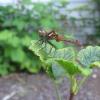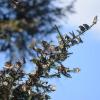As I sit looking east over Lake Huron, with corn and soybean fields stretching for miles to the west behind me, I can’t help but think about how those fields impact the iconic Great Lakes. Over the years, I’ve watched runoff from the fields rushing through the gully and into the lake after summer storms. Unfortunately, the dramatic rise in planting seeds treated with insecticides means that the water that I watch heading for the lake is likely carrying insecticides with it. These insecticides are threatening the health of Midwestern waterways, not just here in Michigan, but throughout the region.
Midwestern waterways are alive with beneficial invertebrates, but these essential species are threatened by a wide variety of contaminants. When aquatic insects decline, the effects can be far-reaching and ripple up the food chain: fish and birds rely on aquatic insects for their food. Migratory birds that stop in Midwestern waters on their journeys north are particularly at risk if they cannot find sufficient food in the spring.
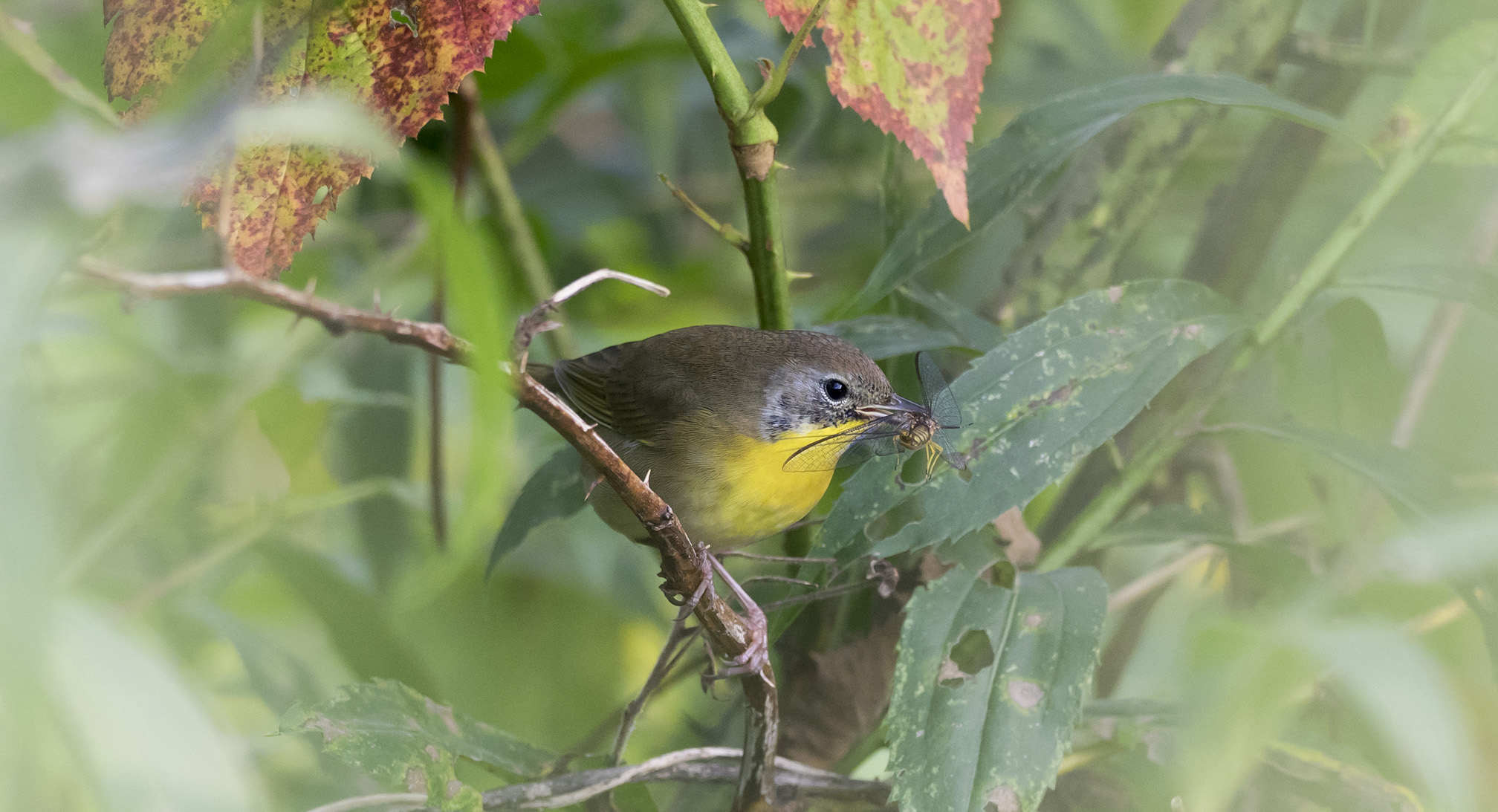
Birds and fish rely on aquatic insects, such as the mayfly seen here in the mouth of a common yellowthroat, as a key source of food. However, populations of aquatic insects can decline when insecticides contaminate waterways. (Photo: Andrew Weitzel, flickr.com [CC BY-SA 2.0].)
For centuries, crop seeds have been coated with various products to protect them from disease, pests, and decay. In recent decades, however, seed companies have increasingly applied systemic neonicotinoid insecticides to crop seeds that are intended to be taken up by the growing crops and protect them against insect pests. As this practice has become widespread, the water quality impacts of planting insecticides along with seed across so many acres have not garnered much attention. Xerces has just released a fact sheet that explores how the ubiquitous use of seed treatments affects water quality throughout the Midwest, and the findings are sobering for our aquatic ecosystems.
The most common seed treatment insecticides are those in the neonicotinoid class (usually called simply neonics), which have gained notoriety for their toxicity to pollinators. However, their impacts on aquatic insects have received less attention. Not only can insecticides kill insects outright, but they can also leave them more vulnerable to other stressors and harm populations over time. Neonics can harm sensitive aquatic insects at very low concentrations, and unfortunately, they are now commonly found at damaging levels in waterways across the Midwest, especially where treated seed is planted.
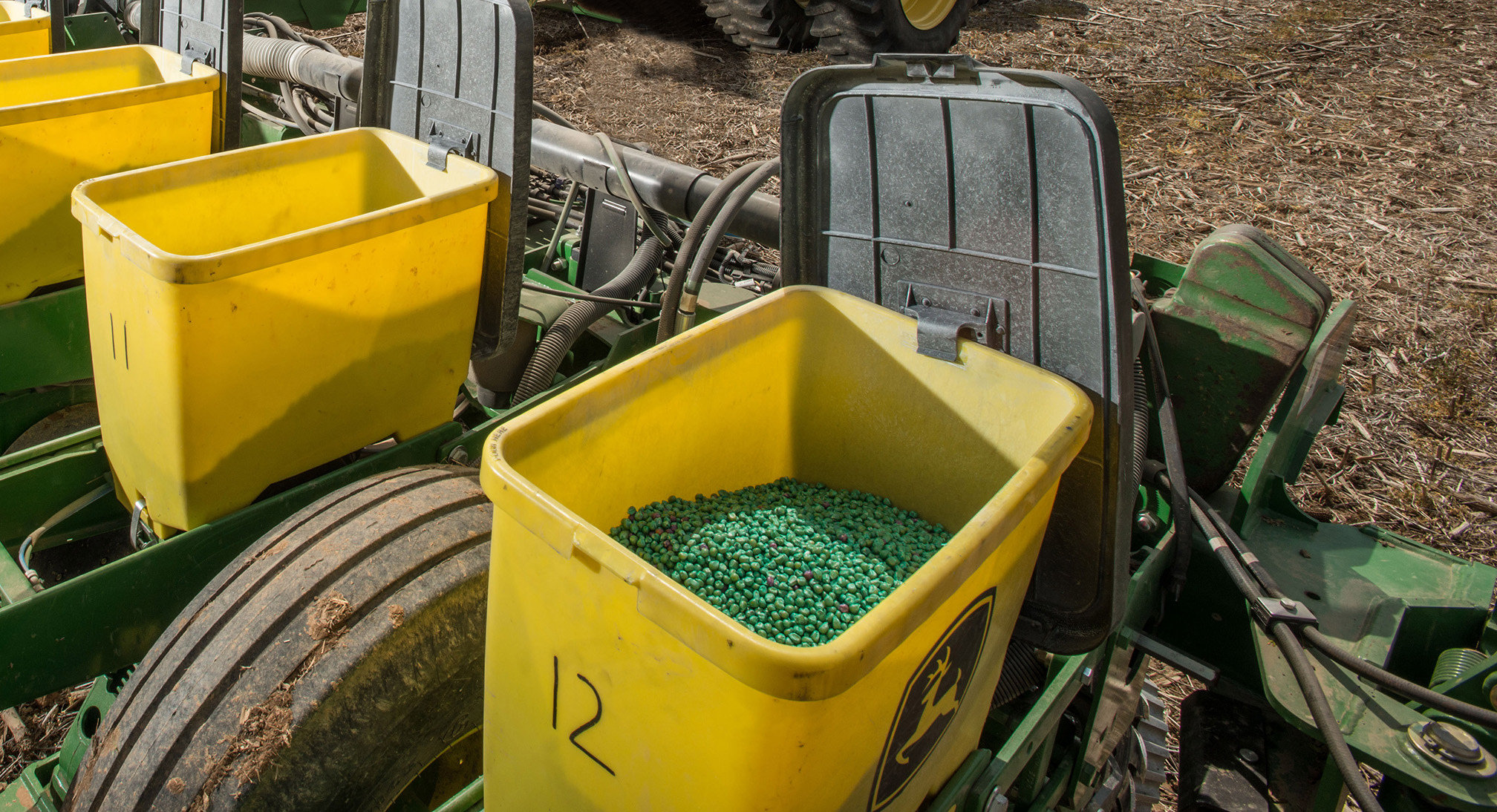
Crop seed treated with insecticides is now commonly planted across the roughly 148 million acres of corn and soybean in the Midwest. These crops cover an area larger than Minnesota and the Dakotas combined. (Photo: USDA-NRCS/Lance Cheung.)
While neonics usually find their way into water from areas where they are applied, they can also contaminate water from disposal of excess treated seed. For years, byproducts from an ethanol plant in Nebraska that processed most excess treated seed were spread on nearby fields leading to severe contamination in the area. The plant has now been shut down and the cleanup is ongoing, but the larger question of how excess treated seed should be disposed remains unaddressed.
The U.S. Environmental Protection Agency sets benchmark values that are intended to represent levels below which pesticides are not expected to harm wildlife. When we compared Midwestern water sampling data to these EPA benchmarks for freshwater invertebrates, we found that 81% of water samples containing one neonic were above its benchmark, signaling significant risk to aquatic insects and ecosystems. However, impacts on aquatic communities have also been seen in Midwestern wetlands where the neonic concentrations were below the benchmarks, at levels that EPA does not consider to affect insects.
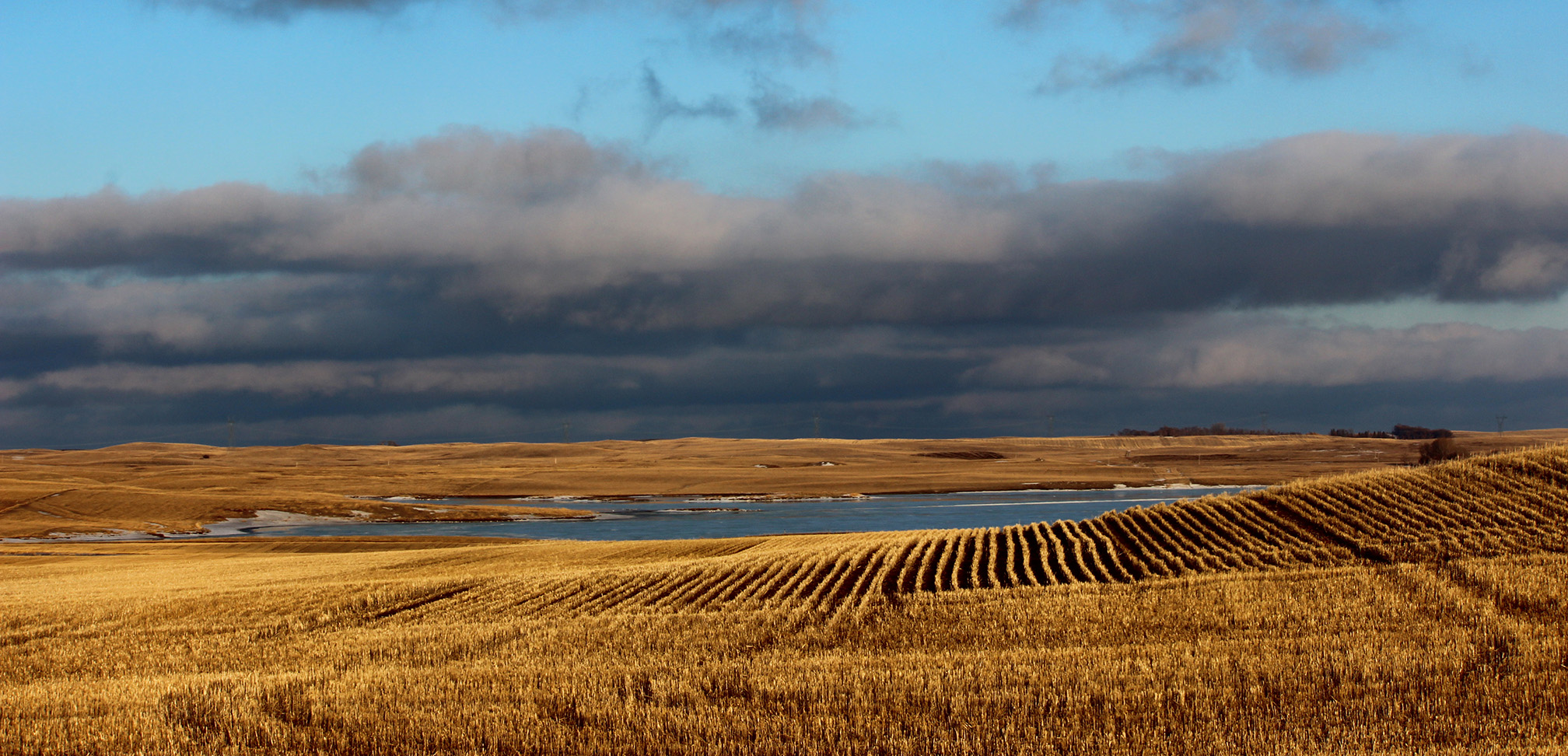
Wetlands in crop fields are especially vulnerable to insecticide contamination from seed treatments as most of their water filters through the surrounding fields. Pothole wetlands such as the one shown here are essential stopover and feeding places for millions of migrating geese and ducks. (Photo: Krista Lundgren/USFWS.)
Across the Midwest, we are finding insecticides in waterways at levels that threaten aquatic ecosystems and the wildlife and people that rely on them. We must all work to avoid relying on this harmful practice: regulators can provide incentives and research on alternate pest management, seed companies can offer more options without insecticides, farmers can turn to other proven pest management strategies, and everyone can advocate for policies that support sustainable pest management strategies, ultimately benefiting the waterways we all share. With all hands on deck, we can reduce the threat that seed treatment insecticides pose to waterways across the Midwest and around the country.
Further Reading
Learn more from Xerces about Understanding Neonicotinoids
Additional Xerces resources on Protecting Waters from Pesticides
Practical Farmers of Iowa asks Are Neonic + Fungicide Soybean Seed Treatments Justified?
Neonics are not just impacting the Midwest. Learn more from Xerces about Protecting California’s Waters from Neonicotinoid Contamination

